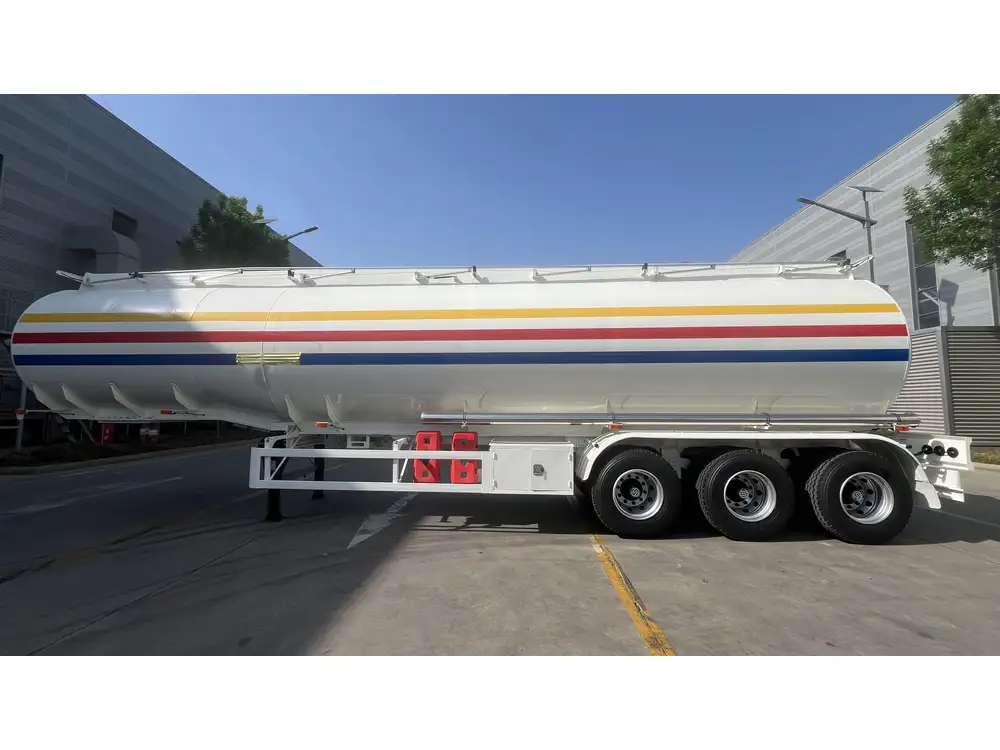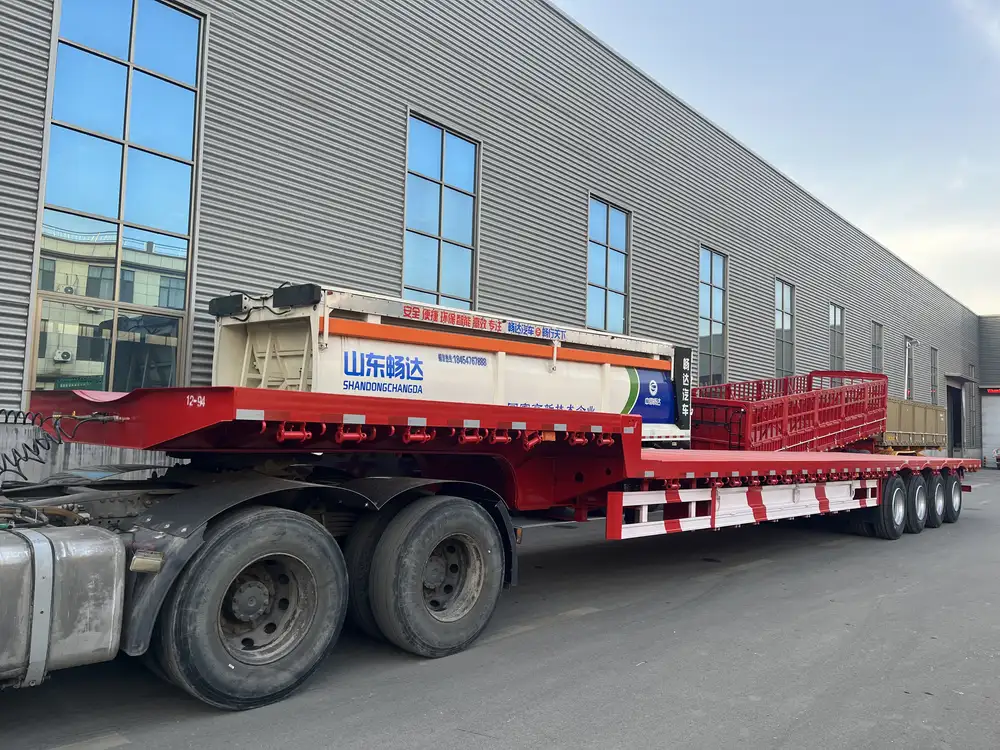When it comes to transporting goods, understanding the dimensions and capacity of your transportation vehicles is crucial. Among various options, the 53-foot semi-trailer stands out as a popular choice for long-haul trucking. This guide aims to provide a detailed analysis of how many pallets can fit on a standard 53-foot semi-trailer, including factors influencing capacity, loading strategies, and industry best practices.
Understanding the Dimensions of a 53-Foot Semi Trailer
A standard 53-foot semi-trailer typically has the following dimensions:
- Length: 53 feet (636 inches)
- Width: 8.5 feet (102 inches)
- Height: 13.5 feet (162 inches) – this can vary slightly depending on the make and model.
Interior Dimensions
The usable interior dimensions, which are crucial for pallet loading, include:
- Internal Length: Approximately 52.5 feet (630 inches)
- Internal Width: Approximately 8.0 feet (96 inches)
- Internal Height: Approximately 13.5 feet (162 inches)
Understanding these dimensions is key when determining how many standard pallets can fit within the trailer.

Standard Pallet Dimensions
In the logistics industry, the most commonly used pallets are:
- Standard U.S. Pallet: 48 inches by 40 inches (4 feet by 3.33 feet)
- Euro Pallet: 1200mm x 800mm (approximately 47.2 inches by 31.5 inches)
Pallet Configuration
The way pallets are loaded onto the trailer significantly influences the total capacity. There are two common arrangements:
- Straight Load: Pallets are aligned in the same direction.
- Cross Load: Pallets are stacked in alternating directions.
Total Capacity Evaluation

Straight Load Arrangement
In a straight configuration, let’s analyze the fit:
- Length of the Trailer: 52.5 feet = 630 inches.
- Length of a Pallet: 48 inches.
Thus, the number of pallets that can fit in length is calculated as follows:
[ \text{Number of Pallets} = \frac{\text{Internal Length}}{\text{Pallet Length}} = \frac{630}{48} \approx 13.125 ]This means you can fit 13 pallets lengthwise in a straight load.
- Width: The internal width is approximately 96 inches, allowing:
Thus, you can fit 2 pallets side by side.
Total Pallet Capacity (Straight Load)
Putting these configurations together gives:
[ \text{Total Pallet Capacity} = \text{Pallets in Length} \times \text{Pallets in Width} = 13 \times 2 = 26 ]So, in a straight load configuration, a 53-foot semi-trailer can carry approximately 26 standard U.S. pallets.
Cross Load Arrangement
In a cross load setup, you alternate the orientation of the pallets. This often results in a different capacity:
- Each cross-loaded pallet takes up more width, but with less length utilized.
Typically, with cross-loading, you can fit:
- Pallets Crosswise: 12 pallets lengthwise and 2 or sometimes even 3 across, depending on the load balancing and adjustments to secure the pallets.

Total Pallet Capacity (Cross Load)
[ \text{Total Pallet Capacity} = 12 \times 3 = 36 \text{ (approximately with optimal space management)} ]But in practical scenarios, a safer estimate is around 28 pallets with cross-loading, accounting for stability and safety in transportation.
Factors Influencing Pallet Capacity
Several key factors influence how many pallets can fit on a 53-foot semi-trailer:
- Pallet Size Variability: Different pallet sizes can alter capacity significantly.
- Weight Restrictions: Each state has different weight regulations. Be mindful of both gross vehicle weight ratings (GVWR) and payload capacity.
- Load Type and Weight Distribution: Heavier goods may require more careful management, reducing the number of pallets loaded.
- Loading Technique: Efficient loading can maximize space, while poor planning might lead to wasted space.
- Regulatory Compliance: Always ensure regulations regarding height and width are adhered to, as this affects capacity.
Best Practices for Loading Pallets in a Semi-Trailer
To maximize your pallet loading efficiency and ensure safe transportation, consider the following best practices:

1. Prioritize Weight Distribution
Ensure even weight distribution across the trailer to enhance stability and avoid potential safety hazards.
2. Utilize Loading Equipment
Employ pallet jacks or forklifts to facilitate quick and safe loading. This is especially important when dealing with heavier pallets.
3. Optimize Pallet Arrangement
Experiment with different arrangements based on the product type and weight. Always ensure that the pallets don’t stick out or exceed weight limits.

4. Employ Load Securing Methods
Use straps, bands, or cargo nets to keep pallets secure during transit. This prevents load shifting, which can lead to accidents.
5. Regularly Inspect Your Load
During transit, regularly check to make sure nothing has shifted. Stopping periodically to inspect the load can prevent major issues.
Conclusion
In summary, a 53-foot semi-trailer can typically fit between 26 to 36 pallets, depending on the arrangement, load type, and adherence to safety regulations. The specific number can vary based on various factors, including the size of the pallets used and the desired configuration.
Understanding these dynamics not only enhances loading efficiency but also ensures safer, more reliable transportation of goods. By implementing best practices in loading techniques and maintaining awareness of regulatory guidelines, logistics professionals can make the most of their semi-trailer capacities.

FAQs
Q1: How can I determine if my goods can fit on a 53-foot semi-trailer?
A1: Calculate the total dimensions of your pallets and compare them to the internal dimensions of the trailer. Adjust based on your desired arrangement style.
Q2: Are there industry standards for pallet weights?
A2: Yes, while a standard pallet typically weighs around 40-60 lbs when unloaded, heavy-duty pallets can weigh more. Always account for this in your total load calculation.
Q3: What is the advantage of using cross-loading techniques?
A3: Cross-loading maximizes the use of space and can enhance stability but requires careful planning to ensure safety and compliance.
Q4: Can I fit more than 36 pallets if configured differently?
A4: While it’s theoretically possible to adjust configurations for a greater count, safety and regulatory compliance should always be prioritized.
Q5: What strategies can help in withstanding weight restrictions?
A5: Ensure you’re aware of the legal weight limits in the jurisdictions you’re traveling through and consider lighter materials or smaller pallet sizes when planning shipments.



